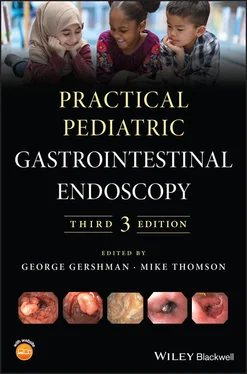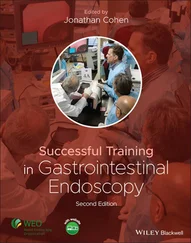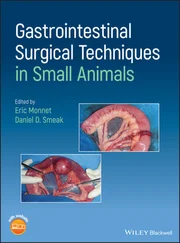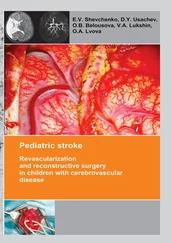Library of Congress Cataloging‐in‐Publication Data Names: Gershman, George, editor. | Thomson, Mike (Mike Andrew), editor. Title: Practical pediatric gastrointestinal endoscopy / edited by George Gershman, Mike Thomson. Description: Third edition. | Hoboken, NJ : Wiley‐Blackwell, 2021. | Includes bibliographical references and index. Identifiers: LCCN 2020022834 (print) | LCCN 2020022835 (ebook) | ISBN 9781119423454 (hardback) | ISBN 9781119423416 (adobe pdf) | ISBN 9781119423485 (epub) Subjects: MESH: Endoscopy, Gastrointestinal | Pediatrics–methods | Child | Infant Classification: LCC RJ446 (print) | LCC RJ446 (ebook) | NLM WI 190 | DDC 618.92/3307545–dc23 LC record available at https://lccn.loc.gov/2020022834LC ebook record available at https://lccn.loc.gov/2020022835
Cover Design: Wiley
Cover Image: © FatCamera/Getty Images
George Gershman To the new generations of pediatric gastroenterologists and endoscopy enthusiasts: a letter to the future .
Once upon a time, there was a young fellow in Moscow, Russia, who was a resident working in one of the oldest hospitals in Moscow, named after Yevgeny Botkin, court physician to Tsar Nicholas II (who was murdered along with the entire Tsarust family by Bolsheviks in 1918).
The training was all about patient care. The diagnostic tools were limited to a stethoscope, basic laboratory support, and X‐rays. The time felt almost frozen.
One day, I heard a rumor that one of the attending physician named Eduard Rokhlin was performing unique procedures, and out of curiosity I asked for permission to watch.
To my surprise, I was allowed not only to observe the study but look inside the endoscope. I still remember that moment of excitement and disbelieve that I was looking inside the stomach of a live person in real time. It was the moment which changed my life. I was fortunate to witness the fast progression of flexible endoscopy from a primitive stage of large‐caliber fiberscopes with an eyepiece resembling that of old microscopes to modern high‐definition, slim and ultra‐slim video endoscopes, single‐ and double‐balloon enteroscopes, endoscopic capsules, and many other innovations which have opened unlimited diagnostic and therapeutic possibilities in the field of pediatric gastroenterology.
You, my young colleague, who have opened a new page of your life, step into a fascinating journey of new discoveries in pediatric gastroenterology.
I express my deep gratitude to Dr Eduard Rokhlin, who was my endoscopy mentor and dear friend; Professor Samy Cadranel and Jean‐François Mougenot: two remarkable physicians and endoscopists who opened the door for me to enter the world of European community of pediatric gastroenterology; Professor Jon A. Vanderhoof, who gave me the opportunity to share my endoscopy skills and scientific data with my American colleagues at the Annual Meeting of North American Society of Pediatric Gastroenterology and Hepatology in 1989; and Professor Marvin E. Ament, one of the pioneers of pediatric GI endoscopy, who invited me to work with him at UCLA in Los Angeles. Finally, this book would not be possible without love abd support of Irina, my amazing wife and healer and my daughter Zhenya, a talanted artist, educated and art historian and my grandauphter Nikka, a truly gifted musician and composer.
Mike Thomson Why Pediatric Endoscopy?
Please forgive this indulgence, but as you may divine from this, I am clearly a little too focussed, and some may say ‘sad and obsessed’, with this area of medicine!
Like most things in life, and particularly in the serendipitous, chaotic and mal‐designed world of medical careers, I ‘fell’ in to endoscopy in children. Which does sound a little ‘messy’!
I am very grateful to George my co‐Editor and massive contributor for the opportunity to join him in this venture ‐ we did it together for the Second Edition 10 years ago, and this version has massively surpassed that one. Marvin Ament should not be forgotten as an integral part of the first and second Editions ‐ a real progenitor of paediatric endoscopy. We hope that this Third Edition has kept pace with this fast‐changing field.
I was first exposed to endoscopy in children in 1986 in a large teaching hospital in the North of England where it was ‘hold them down, minimally sedate, and get on with it.’ Things have changed a bit since then! However, to be fair, at that point, I did not ‘get the bug’ for pediatric endoscopy. It was really still in its infancy, having been championed in the late 1970s and early 1980s by such giants of the field as Sami Cadranel (so sadly, recently left us), Marvin Ament and Jean‐Francois‐Mougenot. Sami, Jean‐Francois and I were (much) later get to know each other and become friends. They and many others set the scene for the undertaking of children’s endoscopy by children’s specialists in GI – a cause I have always believed in and tried to implement. Who wants an adult surgeon doing a quick sigmoidoscopy on your child with suspected Crohn’s and taking no biopsies? Never mind not getting to the ileum! Hobby horse time – I always call the lower GI procedure an ileo‐colonoscopy not simply a colonoscopy. Why, for instance, would you be happy with having a bronchoscopy where the bronchoscopist only examined the trachea and main left and right bronchi without going further? Or even just the left lung and not the right?!
My first inspirational moment came when I took up the position of GI/Hepatology Fellow in the Royal Brisbane Children’s Hospital in Australia in 1989 ‐ a perfect equation of work hard/play hard. My mentor Prof Ross Shepherd was, and is, one of the most astute clinicians I have had the good fortune to learn from ‐ and luckily he was a great teacher of endoscopy as well. Prof Geoff Cleghorn and Dr Mark Patrick deserve mention here as well and imparted knowledge and skill tips that I have not forgotten. Australia at this point were streets ahead of Europe in this area and in the 5 years I was there I had an accelerated endoscopy training, which, like many things in medicine, was down to good luck rather than good management. Also undertook my MD Doctorate on CF here.
Quick story ‐ on our research staff we had a vet called Ristan Greer and I had a patient who had recurrent H pylori type bug called then Gastrospirillum hominis (now Helicobacter heilmanii) only usually previously seen in cats and dogs – we agreed to scope the cats and dogs at their farm with Ristan anesthetising them and using an old scope that was to be thrown out we identified the micro‐organism in the cats, gave eradication to the girl and the cats simultaneously, and she was ‘cured’. Cue a paper in The Lancet.
Watersheds occur in life, and I chose, for family reasons, to return to the UK in 1994. Birmingham and Dame Professor Deirdre Kelly CBE and her world‐leading liver unit awaited. Gulp. Without doubt one of the most inspirational women and doctors in the UK, to this day. When I first arrived, I met Sue the amazing PA to Deirdre, and after she had shown me my office – in a Portacabin! – I asked her ‘Are you doing that accent for a joke?’ It took a while for me to get back in to her good books! It was easy transferring skills but not so easy adapting back to a West Midlands climate. I loved my time there but the only things that the two cities have in common is the letter ‘B’. No beach or surf in Brummie. Made some great life‐long friends there though. I clearly remember getting a phone call, possibly ‘tongue in cheek’, from the head histopathologist in Birmingham Children’s Hospital two weeks after I had started. I had performed a scope on a post‐transplant girl and sent the biopsies off. He said I had mislabelled the samples because I had put ‘terminal ileum’ on one, and they hadn’t seen that label for years, so was I sure! And so to another mentor, the extraordinary Deirdre Kelly, from whom I learnt many things ‐ but not much endoscopy. But another good friend which the journey of medicine has allowed me to make. She was instrumental in my application to then become a Consultant with the incomparable Prof John Walker‐Smith, one of the fathers of our discipline, at the Royal Free Hospital in London. Got lost, nearly missed the interview, swore I would never work and live in London ‐ got the job and moved to London.
Читать дальше









